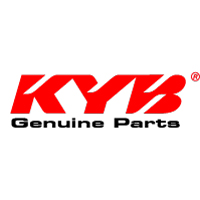
KYB Factory Press Nut M10x1.25 for bottom end KIT BETA
Genuine KYB Factory Race Parts(SKU: 000.0869)
Special Order
Find your Bike:

Right in the centre of your motorbike's coilover is the main damping shaft. At the top end it holds the piston inside the shock absorber body while at the bottom end it screws onto the Clevis or Yoke.
A clevis has a split fork of two tabs with a gap between them (like the diagram shown), while a yoke has just one wide ring sticking down (much like the top of a shock body).
If your motorcycle shocks have rebound adjustment you will usually find it inside this end eye assembly which then bolts to the rear swingarm or suspension link via individual mounting bearings & grease seals or complete chassis bearing kits to keep the suspension moving smoothly. We have guides on how to service your suspension links and using clickers effectively with DIY damping adjustment.














Right in the centre of your motorbike's coilover is the main damping shaft. At the top end it holds the piston inside the shock absorber body while at the bottom end it screws onto the Clevis or Yoke.
A clevis has a split fork of two tabs with a gap between them (like the diagram shown), while a yoke has just one wide ring sticking down (much like the top of a shock body).
If your motorcycle shocks have rebound adjustment you will usually find it inside this end eye assembly which then bolts to the rear swingarm or suspension link via individual mounting bearings & grease seals or complete chassis bearing kits to keep the suspension moving smoothly. We have guides on how to service your suspension links and using clickers effectively with DIY damping adjustment.
These OEM lower attachment lugs with internal rebound clicker bolt onto the base of the shock shaft using a lock or jam nut - if yours is being a pain, check out our nuts & bolts tech article for some help.
Although the damper rod looks super simple, it too is full of inner components - the reb adjuster presses on a pushrod that slides around inside that main shaft, and it needs tiny rod guides, bushes, o-rings and an angled end needle to push and adjust the damping.
© 2025 Teknik Motorsport Pty Ltd. ABN: 29137380324. All rights reserved.